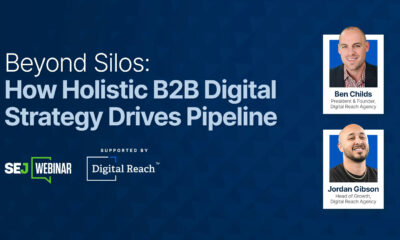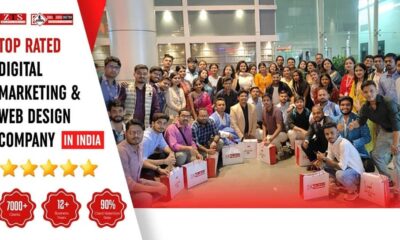TECHNOLOGY
The Intersection of Digital Transformation and Data Privacy

Imagine for a moment your social security and driver’s license numbers are stolen – and not by your own devices.
You didn’t leave your purse in an unlocked car nor drop your wallet at the store. No, this thievery happened under someone else’s watch. Add to that, the breach happened within a company you once worked for or currently patronize. You are not alone in feeling violated; more than five million people are affected, although that doesn’t provide any sense of comfort.
Like many unexpected crises, your other worries now seem small. With your personal information at risk, you wonder: How do I keep my information safe as digital transformation unfolds and cloud computing becomes the norm?
The scenario outlined above is a true story. The personal data of customers and former employees of Infinity Insurance were breached in December of 2020. The story underscores the growing importance of data privacy impact. It’s a different kind of security issue. There is no easy fix when personal data is stolen. You can’t call someone and get a new driver’s license or social security number like you can with a credit card. It’s much more complicated.
Stories of data misuse take many different forms. What if your sensitive information got out because a company you worked for or purchased from sold its data? Or because an employee at that organization copied your info over to another location to use a different analysis application? How much worse would you feel then? There is a growing concern around how much of our private personal data is being sold or used under our noses, who has access to what information, and how information from multiple sources can be used in conjunction to identify the original individual.
The impact is, however, much bigger than we think. In its coverage on the topic, CRN magazine cited “more than 98.2 million individuals were impacted by the 10 biggest data breaches in the first half of 2021, with three of the 10 largest breaches occurring at technology companies.” This insight, collected by the ITRC and the U.S. Department of Health and Human Services, demonstrates the precarious intersection of digital transformation and data privacy. On the flip side, the penalty for breach of data privacy is hefty. Amazon’s fine of $886 million from the Luxembourg’s National Commission for Data Privacy Is unprecedented. I see numbers like these rising in the future for companies unprepared or unconcerned about data privacy.
The Data Privacy Imperative

Freedom is a topic I often talk about. What I mean here is cultivating freedom during a time when we are experiencing a data explosion and evolution of technology, one where opportunities from data and the risks are both enormous.
We see this delicate balance between freedom and protecting data privacy all around us. For example, in the field of healthcare, how do you anonymize sensitive information about patients while enabling data to be used to optimize patient care? Or in the banking industry, how do you protect personal information while creating a seamless customer experience?
Worrying about security or privacy of information erodes our personal freedom by creating anxiety and distrust. So we must ask ourselves: How do we turn knowledge into wisdom? Data into insights? Our values into trust?
There are four areas to consider:
“Build” It: Establish data governance goals and objectives by making it part of the business strategy. Define and implement a data stewardship program to align with business outcomes, streamline and standardize data to ensure quality and improve efficiency, establish master data management, and track on-going improvement. Understand who is consuming what data, who will have the access to what data and why the data is important.
“Share” It: Upskill and educate your workforce to meet the demands of data privacy across the organization. Make everyone a “data expert” so that employees understand their responsibilities and the role they play to ensure privacy standards are upheld. This includes learning lessons when failures occur. Infinity Insurance vowed to look at the results of its security investigation and strengthen its network security and cybersecurity program.
“Own” It: It’s not about data senders, it’s about impact. What will you drive and how do you maximize outcomes? Accountability is critical. With all these different data available, the key is to gain actionable insights for more effective business decisions – and hold leaders accountable. They must “own” it. Imagine what your customers, peers, employees and supply chain partners would think if they are 100% confident you would be willing to defend data privacy. It takes the idea of explainability to the next level and forces people to consider how they would justify the usage of personal information.
“Set” It: Make policy a priority by setting down a precedent for monitoring data privacy. More companies are prioritizing data privacy at the board level with dedicated committees created to help solve this problem.
In Gartner’s “Predicts 2021: Data and Analytics Strategies to Govern, Scale and Transform Digital Business,” two compelling predictions further support the perfect storm created when digital transformation, data privacy and cloud collide
- By 2024, 60% of the data used for the development of AI and analytics solutions will be synthetically generated.
- By 2025, 80% of data and analytics governance initiatives focused on business outcomes, rather than data standards, will be considered essential business capabilities.
A look ahead tells us that there will be more threats, more AI-driven data, more people impacted (especially with the growing number of devices worldwide) and more vulnerable entryways as we enter a multi-cloud world.
IBM Driving Solutions for Data Privacy

There are several tech innovators who are developing solutions at the intersection of digital transformation (cloud) and data. IBM is one of them.
IBM Cloud Pak® for Data allows organizations to deploy a unified privacy framework designed to help companies fully understand and manage how sensitive data is used throughout their organizations. Key attributes include data governance, data privacy, risk management and data security within a collaborative platform, providing users a universal view of PII across their businesses. It answers the who-what-where-when questions behind data access.
One critical point of difference for IBM Cloud Pak for Data is that data remains stationary, meaning data can be used without moving it from its source for AI and analytics initiatives. Advanced capabilities such as automated masking of highly sensitive data and de-identification of data support data privacy. Automating data protection – especially for high-risk data – lessens the possibility of human error or misuse.
Conclusion

Hopefully, walking in the shoes of those impacted by the Infinity Insurance security breach showed you how data privacy becomes top of mind for people when a crisis occurs. Future-forward leaders, however, will prepare. They will lead with accountability, realizing that protecting people as well as staying ahead of growing regulations and public perception on data usage leads to stronger data privacy with accountability.
James M. Strock, author of Serve to Lead, writes: “In the wired world of the 21st century, advancing shared values creates value.” It is not often values and technology are written in the same sentence – but they should be. I can’t think of a better viewpoint than values to guide our companies while making IT decisions, setting down IT policies and supporting the business strategy.
Disclaimer: From time to time, IBM invites industry thought leaders to share their opinions and insights on current technology trends. The opinions in this article are my own, and do not necessarily reflect the views of IBM & BBN Times.
Source link
TECHNOLOGY
Next-gen chips, Amazon Q, and speedy S3

AWS re:Invent, which has been taking place from November 27 and runs to December 1, has had its usual plethora of announcements: a total of 21 at time of print.
Perhaps not surprisingly, given the huge potential impact of generative AI – ChatGPT officially turns one year old today – a lot of focus has been on the AI side for AWS’ announcements, including a major partnership inked with NVIDIA across infrastructure, software, and services.
Yet there has been plenty more announced at the Las Vegas jamboree besides. Here, CloudTech rounds up the best of the rest:
Next-generation chips
This was the other major AI-focused announcement at re:Invent: the launch of two new chips, AWS Graviton4 and AWS Trainium2, for training and running AI and machine learning (ML) models, among other customer workloads. Graviton4 shapes up against its predecessor with 30% better compute performance, 50% more cores and 75% more memory bandwidth, while Trainium2 delivers up to four times faster training than before and will be able to be deployed in EC2 UltraClusters of up to 100,000 chips.
The EC2 UltraClusters are designed to ‘deliver the highest performance, most energy efficient AI model training infrastructure in the cloud’, as AWS puts it. With it, customers will be able to train large language models in ‘a fraction of the time’, as well as double energy efficiency.
As ever, AWS offers customers who are already utilising these tools. Databricks, Epic and SAP are among the companies cited as using the new AWS-designed chips.
Zero-ETL integrations
AWS announced new Amazon Aurora PostgreSQL, Amazon DynamoDB, and Amazon Relational Database Services (Amazon RDS) for MySQL integrations with Amazon Redshift, AWS’ cloud data warehouse. The zero-ETL integrations – eliminating the need to build ETL (extract, transform, load) data pipelines – make it easier to connect and analyse transactional data across various relational and non-relational databases in Amazon Redshift.
A simple example of how zero-ETL functions can be seen is in a hypothetical company which stores transactional data – time of transaction, items bought, where the transaction occurred – in a relational database, but use another analytics tool to analyse data in a non-relational database. To connect it all up, companies would previously have to construct ETL data pipelines which are a time and money sink.
The latest integrations “build on AWS’s zero-ETL foundation… so customers can quickly and easily connect all of their data, no matter where it lives,” the company said.
Amazon S3 Express One Zone
AWS announced the general availability of Amazon S3 Express One Zone, a new storage class purpose-built for customers’ most frequently-accessed data. Data access speed is up to 10 times faster and request costs up to 50% lower than standard S3. Companies can also opt to collocate their Amazon S3 Express One Zone data in the same availability zone as their compute resources.
Companies and partners who are using Amazon S3 Express One Zone include ChaosSearch, Cloudera, and Pinterest.
Amazon Q
A new product, and an interesting pivot, again with generative AI at its core. Amazon Q was announced as a ‘new type of generative AI-powered assistant’ which can be tailored to a customer’s business. “Customers can get fast, relevant answers to pressing questions, generate content, and take actions – all informed by a customer’s information repositories, code, and enterprise systems,” AWS added. The service also can assist companies building on AWS, as well as companies using AWS applications for business intelligence, contact centres, and supply chain management.
Customers cited as early adopters include Accenture, BMW and Wunderkind.
Want to learn more about cybersecurity and the cloud from industry leaders? Check out Cyber Security & Cloud Expo taking place in Amsterdam, California, and London. Explore other upcoming enterprise technology events and webinars powered by TechForge here.
TECHNOLOGY
HCLTech and Cisco create collaborative hybrid workplaces

Digital comms specialist Cisco and global tech firm HCLTech have teamed up to launch Meeting-Rooms-as-a-Service (MRaaS).
Available on a subscription model, this solution modernises legacy meeting rooms and enables users to join meetings from any meeting solution provider using Webex devices.
The MRaaS solution helps enterprises simplify the design, implementation and maintenance of integrated meeting rooms, enabling seamless collaboration for their globally distributed hybrid workforces.
Rakshit Ghura, senior VP and Global head of digital workplace services, HCLTech, said: “MRaaS combines our consulting and managed services expertise with Cisco’s proficiency in Webex devices to change the way employees conceptualise, organise and interact in a collaborative environment for a modern hybrid work model.
“The common vision of our partnership is to elevate the collaboration experience at work and drive productivity through modern meeting rooms.”
Alexandra Zagury, VP of partner managed and as-a-Service Sales at Cisco, said: “Our partnership with HCLTech helps our clients transform their offices through cost-effective managed services that support the ongoing evolution of workspaces.
“As we reimagine the modern office, we are making it easier to support collaboration and productivity among workers, whether they are in the office or elsewhere.”
Cisco’s Webex collaboration devices harness the power of artificial intelligence to offer intuitive, seamless collaboration experiences, enabling meeting rooms with smart features such as meeting zones, intelligent people framing, optimised attendee audio and background noise removal, among others.
Want to learn more about cybersecurity and the cloud from industry leaders? Check out Cyber Security & Cloud Expo taking place in Amsterdam, California, and London. Explore other upcoming enterprise technology events and webinars powered by TechForge here.
TECHNOLOGY
Canonical releases low-touch private cloud MicroCloud

Canonical has announced the general availability of MicroCloud, a low-touch, open source cloud solution. MicroCloud is part of Canonical’s growing cloud infrastructure portfolio.
It is purpose-built for scalable clusters and edge deployments for all types of enterprises. It is designed with simplicity, security and automation in mind, minimising the time and effort to both deploy and maintain it. Conveniently, enterprise support for MicroCloud is offered as part of Canonical’s Ubuntu Pro subscription, with several support tiers available, and priced per node.
MicroClouds are optimised for repeatable and reliable remote deployments. A single command initiates the orchestration and clustering of various components with minimal involvement by the user, resulting in a fully functional cloud within minutes. This simplified deployment process significantly reduces the barrier to entry, putting a production-grade cloud at everyone’s fingertips.
Juan Manuel Ventura, head of architectures & technologies at Spindox, said: “Cloud computing is not only about technology, it’s the beating heart of any modern industrial transformation, driving agility and innovation. Our mission is to provide our customers with the most effective ways to innovate and bring value; having a complexity-free cloud infrastructure is one important piece of that puzzle. With MicroCloud, the focus shifts away from struggling with cloud operations to solving real business challenges” says
In addition to seamless deployment, MicroCloud prioritises security and ease of maintenance. All MicroCloud components are built with strict confinement for increased security, with over-the-air transactional updates that preserve data and roll back on errors automatically. Upgrades to newer versions are handled automatically and without downtime, with the mechanisms to hold or schedule them as needed.
With this approach, MicroCloud caters to both on-premise clouds but also edge deployments at remote locations, allowing organisations to use the same infrastructure primitives and services wherever they are needed. It is suitable for business-in-branch office locations or industrial use inside a factory, as well as distributed locations where the focus is on replicability and unattended operations.
Cedric Gegout, VP of product at Canonical, said: “As data becomes more distributed, the infrastructure has to follow. Cloud computing is now distributed, spanning across data centres, far and near edge computing appliances. MicroCloud is our answer to that.
“By packaging known infrastructure primitives in a portable and unattended way, we are delivering a simpler, more prescriptive cloud experience that makes zero-ops a reality for many Industries.“
MicroCloud’s lightweight architecture makes it usable on both commodity and high-end hardware, with several ways to further reduce its footprint depending on your workload needs. In addition to the standard Ubuntu Server or Desktop, MicroClouds can be run on Ubuntu Core – a lightweight OS optimised for the edge. With Ubuntu Core, MicroClouds are a perfect solution for far-edge locations with limited computing capabilities. Users can choose to run their workloads using Kubernetes or via system containers. System containers based on LXD behave similarly to traditional VMs but consume fewer resources while providing bare-metal performance.
Coupled with Canonical’s Ubuntu Pro + Support subscription, MicroCloud users can benefit from an enterprise-grade open source cloud solution that is fully supported and with better economics. An Ubuntu Pro subscription offers security maintenance for the broadest collection of open-source software available from a single vendor today. It covers over 30k packages with a consistent security maintenance commitment, and additional features such as kernel livepatch, systems management at scale, certified compliance and hardening profiles enabling easy adoption for enterprises. With per-node pricing and no hidden fees, customers can rest assured that their environment is secure and supported without the expensive price tag typically associated with cloud solutions.
Want to learn more about cybersecurity and the cloud from industry leaders? Check out Cyber Security & Cloud Expo taking place in Amsterdam, California, and London. Explore other upcoming enterprise technology events and webinars powered by TechForge here.
-
SEARCHENGINES7 days ago
Daily Search Forum Recap: April 29, 2024
-
SEARCHENGINES6 days ago
Daily Search Forum Recap: April 30, 2024
-

 MARKETING6 days ago
MARKETING6 days agoHow To Develop a Great Creative Brief and Get On-Target Content
-

 SEO7 days ago
SEO7 days agoGoogle’s John Mueller On Website Recovery After Core Updates
-

 WORDPRESS6 days ago
WORDPRESS6 days ago13 Best Fun WordPress Plugins You’re Missing Out On
-

 SEO5 days ago
SEO5 days agoWhy Big Companies Make Bad Content
-

 SEO5 days ago
SEO5 days agoHow To Drive Pipeline With A Silo-Free Strategy
-

 SEO6 days ago
SEO6 days agoOpenAI To Show Content & Links In Response To Queries
















You must be logged in to post a comment Login